What the petition is about
Heidelberg ist eine der schönsten Städte Deutschlands. Wir wollen diese lebenswerte Stadt noch attraktiver, gesünder, sicherer und klimafreundlicher machen. Dafür benötigen wir bessere Wege für Menschen, die mit dem Rad oder zu Fuß unterwegs sind. Auf geschützten und ausreichend breiten Wegen sollen sich auch Kinder und ältere Menschen mit gutem Gefühl fortbewegen können. Die zahlreichen Radfahrenden sollen in ganz Heidelberg auf einem durchgängigen, sicheren und komfortablen Radrouten-Netz ihre Ziele zügig erreichen. Stadtteil-Zentren sind so umgestaltet, dass sie kurze Wege mit dem Rad oder zu Fuß priorisieren. Oberstes Ziel der Verkehrsstrategie ist die “Vision Zero”: keine Toten und Schwerverletzten im Straßenverkehr.
Click on the points below to learn more.
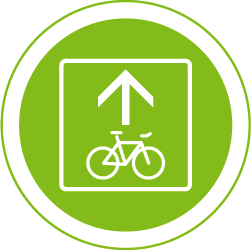
1. Develop a comprehensive and safe route network for everyday cycling
Develop a comprehensive cycling route network by mid-2022, with cycling routes. These have a minimum width of 2.3 m and a permitted speed of 30 km/h, they are clearly separated from pedestrian and car lanes, and at a minimum safe distance of 80 cm from parking cars and with pavement marking to prevent dooring accidents, e.g. as caused by carelessly opened vehicle doors. They are red-coloured, evenly surfaced, without potholes, and with flush kerbs at intersections and junctions. They must also have adequate street lighting. Connect outer city districts with well-developed cycle routes. Ensure end-to-end and direct north to south and east to west routes with rights of way.
Allow registered e-bikes (S-pedelecs) to use the cycle lanes along commuter routes, but at limited speeds.
From 2022 on, add an additional 10 km annually to the cycle route infrastructure without sealing green spaces by converting car parking spaces and car lanes.
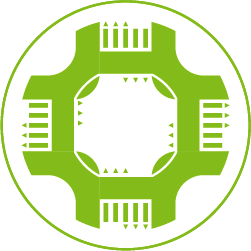
2. Make dangerous intersections safer
Take measures to prevent right-turn accidents by converting three of the most dangerous intersections per year into protected intersections with clear visibility, based on the Dutch “Protected Intersection” concept. Redesign an intersection within six months of a serious cycling accident if traffic routing contributed to the accident.
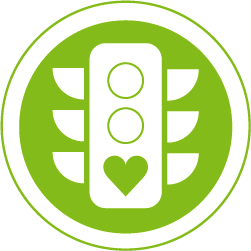
3. Introduce phased traffic lights for bicycle traffic and pedestrian-friendly traffic lights
Conduct a phased traffic lights pilot project on a north to south and an east to west cycle route, with each route connecting at least three city districts. Enable pedestrians to cross (multi-lane) roads without having to stop in between.
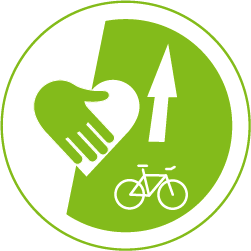
4. Ensure continuous and comprehensive cycle lane maintenance
Ensure that cycle lanes are always kept free of dirt, snow and all other hazards. Prioritize clearing snow from cycle routes to schools and cycling super-highway. Also provide traffic diversions to cyclists around roadworks and construction sites.

5. Create traffic-calmed areas and districts
Create at least one new traffic-calmed or car-free area in every city district by 2030. Increase the attractiveness of these areas with additional green spaces, benches, sitting places, and outdoor seating for cafes and restaurants, etc. Designate an area of at least 2,500 sqm formerly available to car traffic. Use bollards as an easy-to-implement solution to prevent transit traffic through the residential areas.

6. Promote safe and clean family mobility
Set up no-parking zones in front of all children’s day care facilities and primary schools, and provide sufficient day parking for bike trailers and cargo bikes, by 2025. Ensure that children can reach schools and sports areas easily and safely, e.g. by making sure that specific zones are always car-free. From 2022 on, provide at least five rental cargo bikes per 10,000 inhabitants in every city district.
Provide an annual budget of €50,000 to promote and advertise the use of bicycles for commuting to work and schools and to transport cargo and people.
Offer mobility advisory services to families on the birth of their first child.
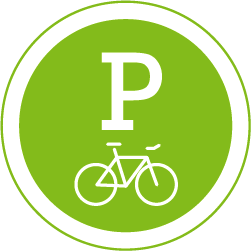
7. Create 8,000 safe bicycle parking spaces by 2030
Every year, create annually 800 additional parking places for bicycles in public spaces previously available to cars, totalling 8,000 new spaces by 2030. Involve residents and local traders in the planning. Make sure that 50% of these parking places offer weather and theft protection, and that 20% offer sufficient space for bike trailers and cargo bikes. Provide e-bike charging stations at larger parking sites. In additional, convert 200 car parking spaces at existing car parks to bike or cargo bike spaces.

8. Implement the measures immediately and transparently
Provide the necessary personnel and organisational means for proper implementation of the ten requirements outlined above. Publish six-monthly written reports on the implementation status, space distribution, and expenditure per means of transportation, for discussion in citizen forums and committee meetings.
Set up an online register for citizens – accessible via a mobile app and a website – to quickly and conveniently report faults/defects and potential hazards. Ensure quick responses to the reported issues and remedy the faults within six months.
